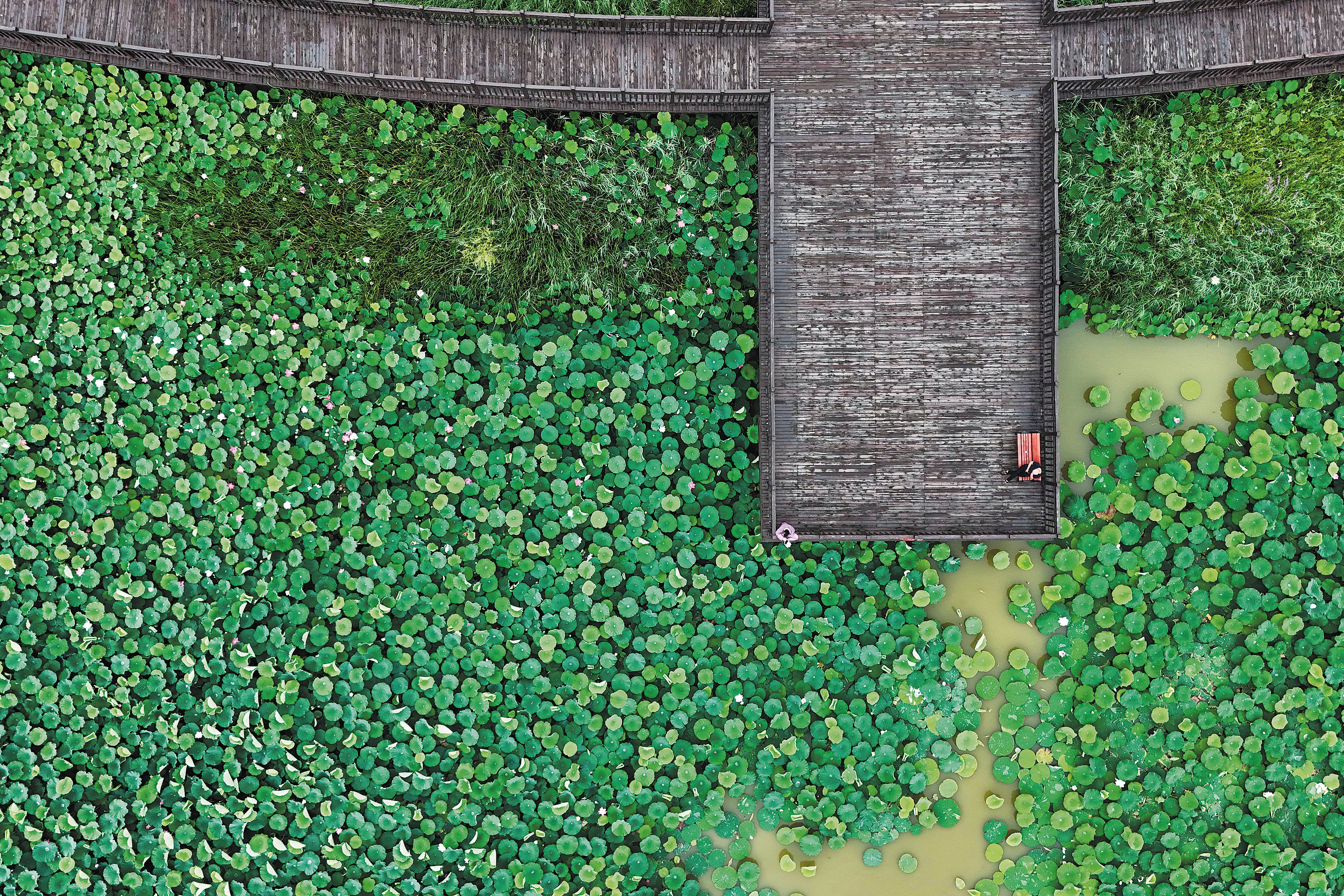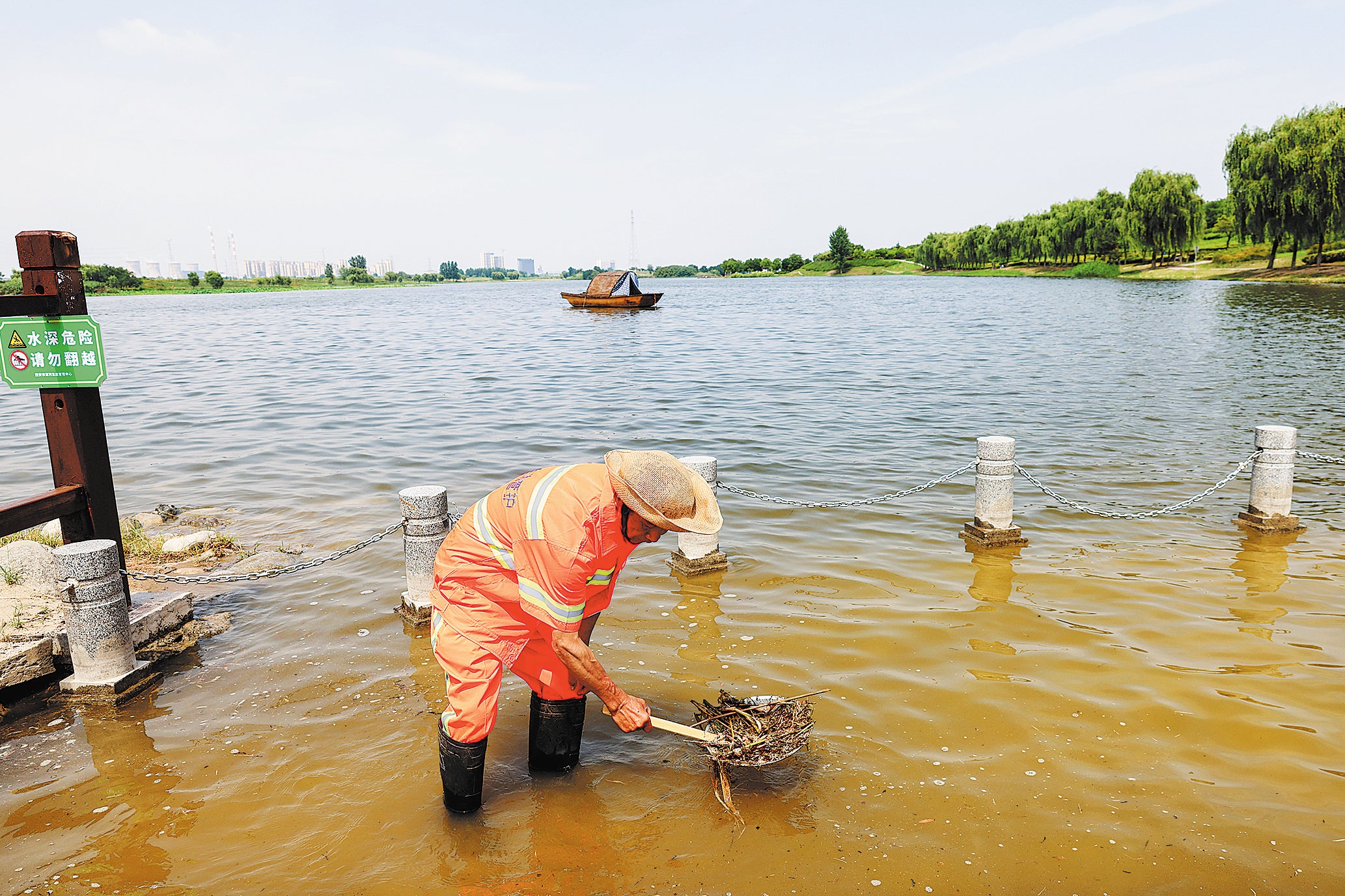Reclaimed water cleans up lake, rivers
THE ARTICLES ON THESE PAGES ARE PRODUCED BY CHINA DAILY, WHICH TAKES SOLE RESPONSIBILITY FOR THE CONTENTS

Xi’an Lake, located in the north of the Shaanxi provincial capital Xi’an, used to be an eyesore avoided by the locals, after years of sand exploitation and factory runoff left it stinking and polluted.
“When I was a child, adults would tell us to stay away from it,” said Chen Xu, 37, referring to the body of water the size of roughly 200 football pitches.
Having grown up near the lake in Xilongwo village, Chen left to become a steelworker after finishing school.
On a return visit to his hometown in 2016, Chen was shocked to discover that the once-polluted Xi’an Lake had been given a much-needed face-lift — the water was cleaner, the air was fresh, there were shrubs and trees planted and people were even visiting it for leisure.
The progress has been made possible through a local government initiative launched in 2013 to treat the area with reclaimed water, according to Wang Yijun, an official with Xi’an’s ecological management centre for the Weihe River, where the lake water flows into.
On average, about 11 million gallons of reclaimed water is diverted into the lake every day. Reclaimed water is wastewater that has been treated for industrial or environmental purposes, or irrigation.
After cleaning up the water in 2016, the government launched a project to plant trees and shrubs in the lake’s surroundings, as well as build a 4.2-mile scenic walkway around it.
Impressed by the remarkable changes to Xi’an Lake, Chen was motivated to return to his hometown to work as a sanitation worker.
“I enjoy working in such a beautiful environment, and it’s close to home, allowing me to take better care of my family,” he said.

Yang Yi, who lives in a community five minutes drive from the lake, said the area has become a popular spot for leisure, and that she takes her two children there at least once a month.
“Many people come for camping. On weekends, the area is often packed with tents,” said the 39-year-old.
A 19-mile section of the Shichuan River that runs through urban Fuping county is another example of how reclaimed water can be used to improve water bodies for the benefit of both the environment and the people.
The once murky stretch of the 85-mile river is today a cherished destination for locals and those from afar.
Zhang Xiqiang, deputy head of Fuping’s water resources bureau, said the river suffered rapid environmental deterioration following the construction of a reservoir upstream in the 1960s and 70s for agricultural irrigation.
The reservoir meant a sharp decrease in the amount of water that flowed into Fuping via the watercourse, he said. Sand and stone exploitation, waste dumping and sewage discharge made the situation even worse.
“While the water was heavily polluted, the river often ran dry,” he said.
For Zhang Lina, a native of Fuping, the river has always held a special place for decades.
“When I was young, every time I passed the river I wanted to play in it, though it was only a small muddy stream at that time,” the 36-year-old recalled.
As an IT worker in Shanghai, she never expected, upon returning to her hometown for a visit five years ago, that the river would have been transformed, surpassing her wildest dreams.
“Once a mere trickle, the river now brims with life,” she said.
The transformation of the watercourse was the result of a treatment programme the local government launched from 2017 to 2019. The programme followed the idea that mountains, rivers, forests, farmlands, lakes and grasslands are a “living community”.
Pipe networks were constructed to collect wastewater for treatment and divert rainwater and reclaimed water into the river and its tributary, the Wenquan River.
In the urban area of Fuping, a 3.2-mile stretch of the Shichuan River has been transformed through an afforestation initiative, resulting in the greening of 173 acres of riverside terrain, now a wetland park.
